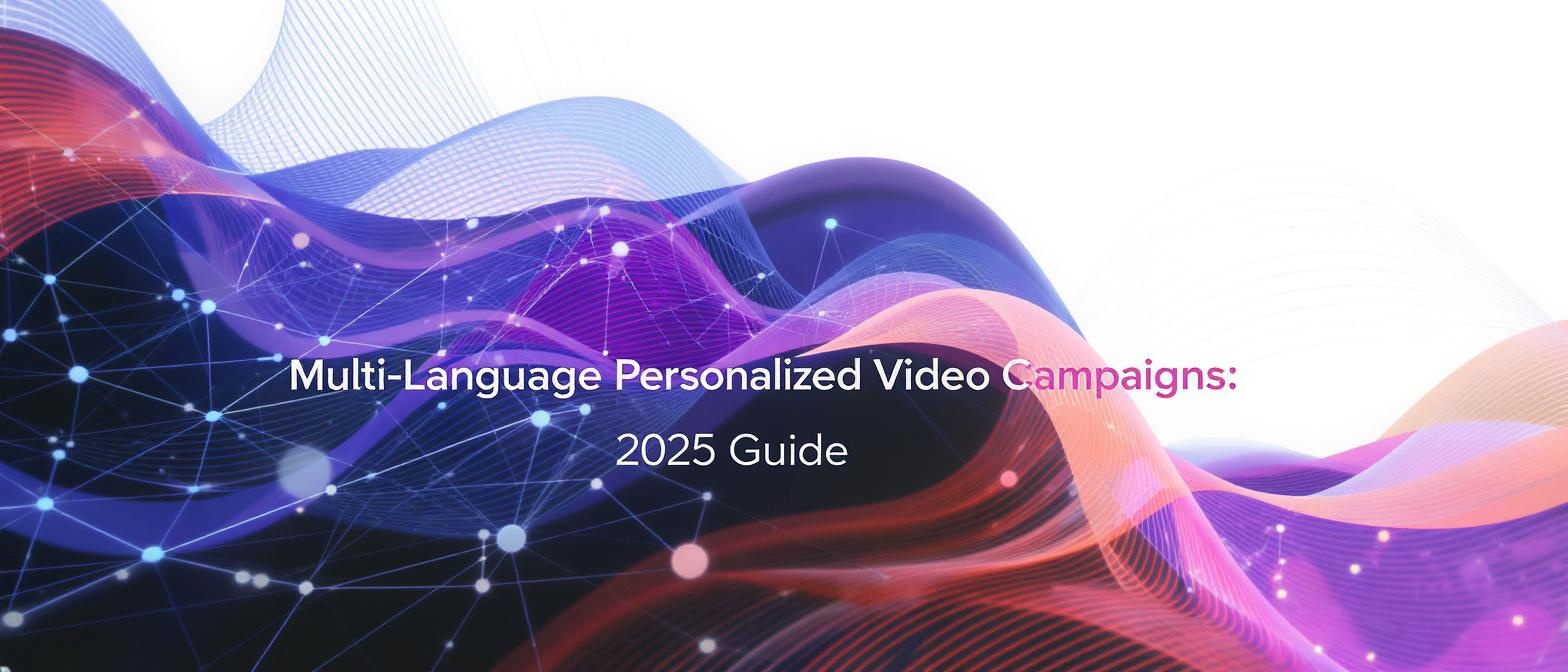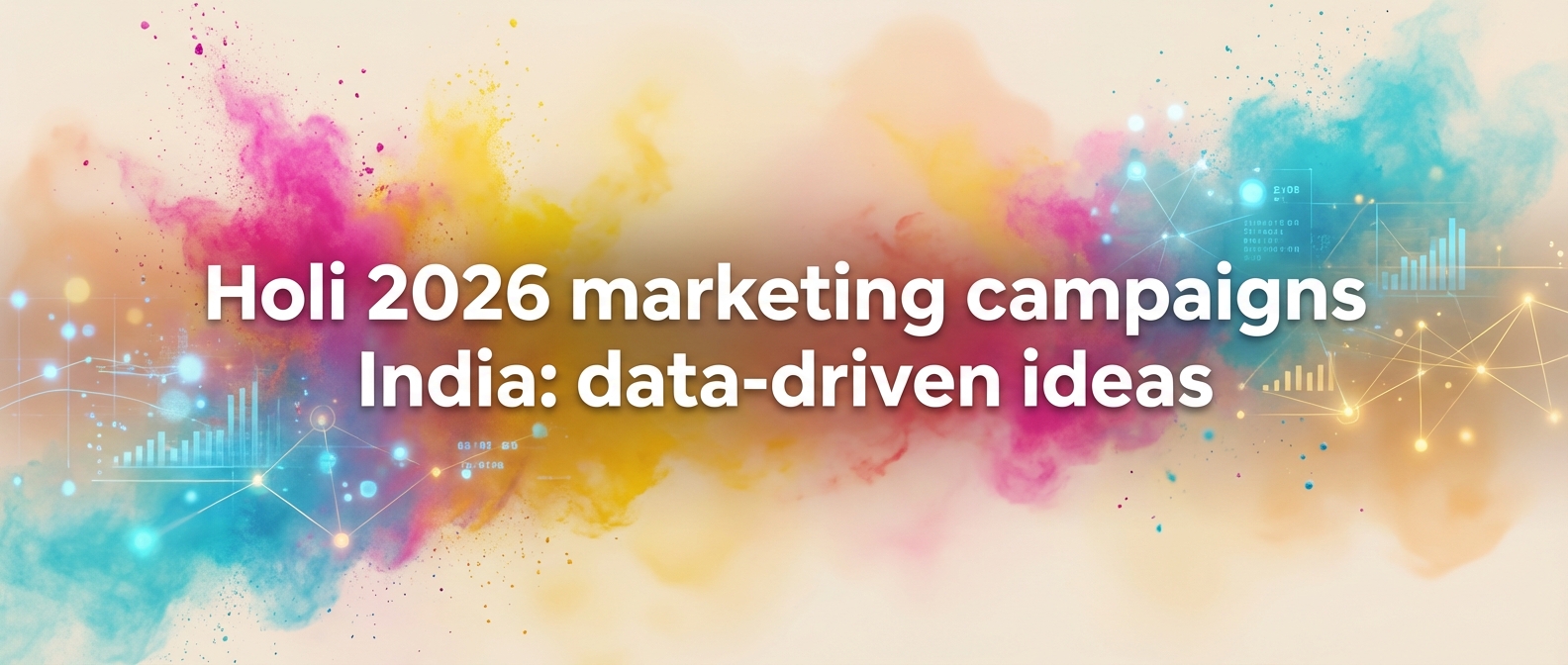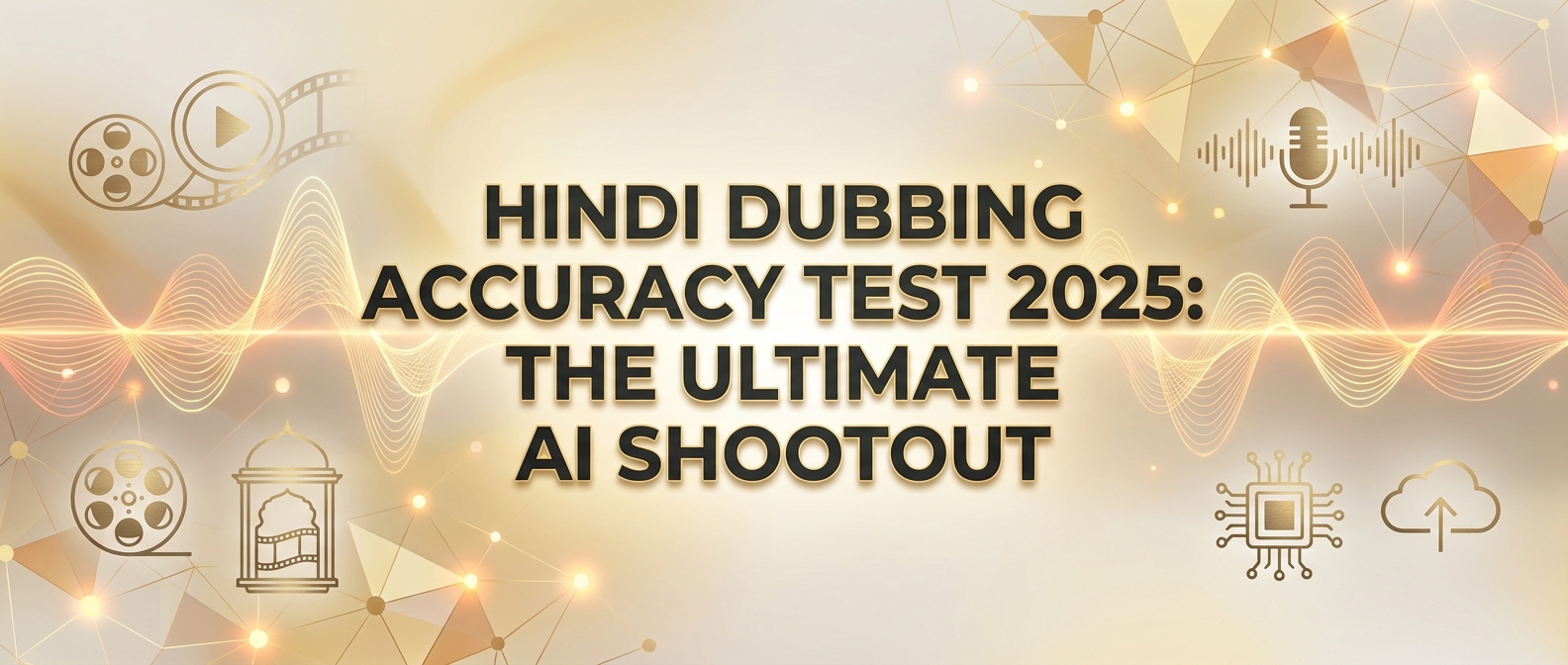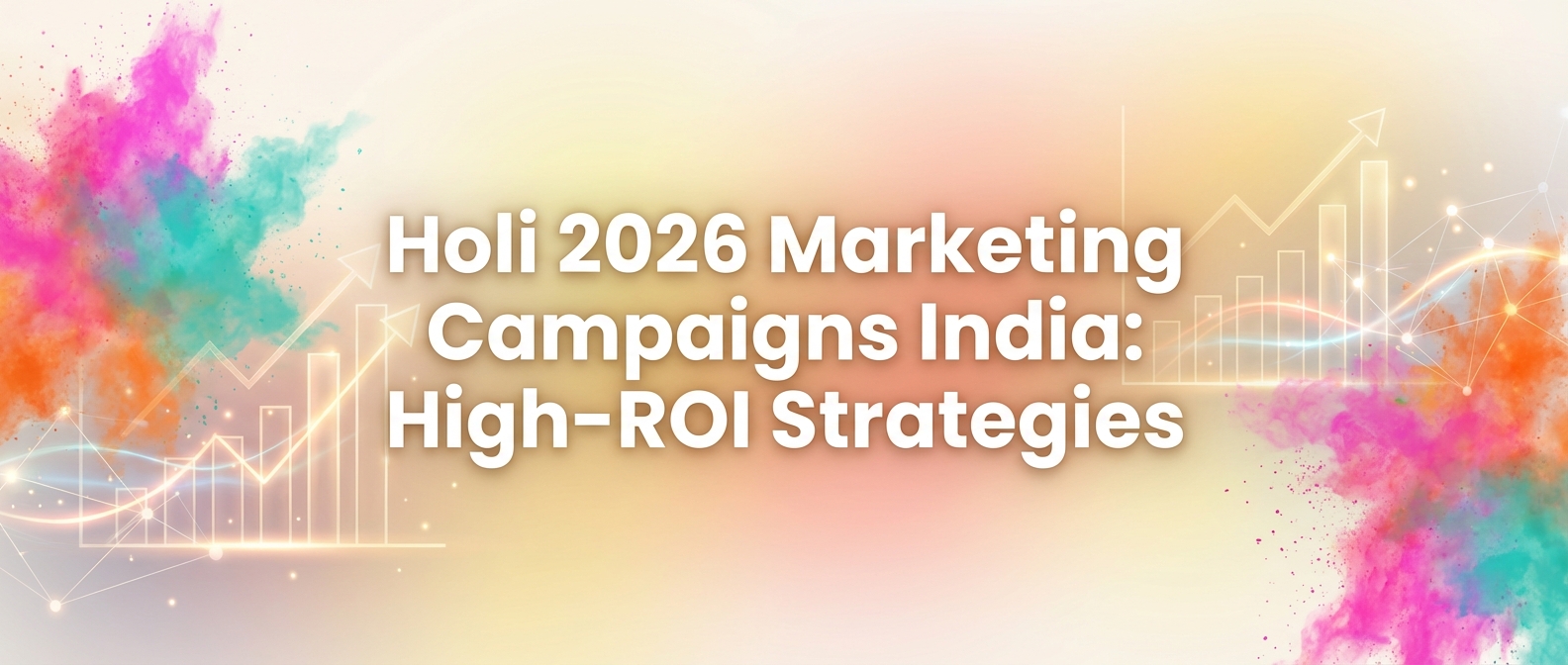How Multi-Language Personalized Video Campaigns Supercharge Regional Marketing
Approx. 12 minute read
Key Takeaways
- Multi-language personalized video campaigns help brands connect with diverse audiences more authentically.
- AI-driven localization and cultural adaptation foster deeper emotional resonance.
- Scalable technology solutions enable hyper-personalization across numerous regions and languages.
- Integrated analytics and measurement ensure continuous optimization and clear ROI.
In today's fragmented digital landscape, capturing audience attention requires more than a one-size-fits-all message. For national and regional marketing teams, the challenge is clear: how do you connect authentically with diverse linguistic and cultural groups? The answer lies in multi-language personalized video campaigns, a transformative approach that is redefining audience engagement. These are not merely translated ads; they are sophisticated, AI-driven video experiences tailored to individual viewers in their native language, complete with flawless lip-sync, retained celebrity voice tonality, and dynamic visuals that can feature a customer's name or city.
This level of hyper-personalization across regions is no longer a futuristic concept but a present-day necessity. As consumer markets become increasingly diverse, brands that speak their audience's language—both literally and culturally—are the ones that will build lasting loyalty and drive significant growth. By leveraging AI, marketers can now move beyond generic messaging and create resonant experiences that make every customer feel seen and valued. As research confirms, “Multi-language personalized video campaigns empower brands to connect with diverse audiences by delivering tailored video content in multiple languages.” This strategy is the key to unlocking deeper connections and achieving unparalleled campaign performance in a multilingual world.
Source: https://creatify.ai/blog/reaching-global-audiences-with-multilingual-video-content
1. Understanding Multi-Language Marketing Campaigns
The strategic imperative for multi-language marketing campaigns is growing at an unprecedented rate. As India’s consumer base diversifies linguistically and culturally, brands have discovered that communicating in local languages is fundamental to building genuine brand affinity and trust. A message delivered in a person’s mother tongue cuts through the noise, creating an immediate and powerful connection that generic, English-first campaigns simply cannot replicate.
A multi-language marketing campaign is a coordinated, strategic effort to deliver a consistent brand message across numerous languages, dialects, and cultural contexts. It goes far beyond simple translation, involving a deep understanding of local nuances to ensure the core message is not just understood but also emotionally resonant. This approach allows brands to maintain a unified identity while speaking directly to the unique characteristics of each target market.
The benefits are substantial. Personalization at this level cultivates stronger brand loyalty, as customers feel acknowledged and respected. This emotional resonance translates directly into higher conversion rates and increased customer lifetime value. As industry analysis highlights, “Personalization facilitates stronger brand loyalty.” Furthermore, by employing meticulous market segmentation and continuous A/B testing, marketing teams can optimize campaign performance for each specific language, ensuring that every dollar spent delivers the maximum possible impact.
Sources: https://rocketium.com/academy/create-visual-multilingual-marketing-campaigns/, https://veracontent.com/mix/multilingual-marketing-campaigns/
2. The Role of Regional Content Personalization
While language is the vehicle for communication, culture provides the context. This is where regional content personalization becomes a critical differentiator. It involves meticulously adapting scripts, visuals, tone, and themes to align with local customs, colloquialisms, traditions, and even popular festivals. This is the essence of true localization—making a global brand feel inherently local.
Effective cultural personalization marketing requires a granular understanding of each region. It’s about knowing which jokes will land, which color palettes evoke positive emotions, and which cultural symbols will resonate most deeply. A powerful example of this in action is Duolingo's highly successful "Love Language" campaign. Instead of a uniform global rollout, the campaign was adapted with region-specific subtitles and cultural references that made the content feel native to each market. This thoughtful approach to localization didn't just earn media coverage; it boosted the campaign's share rate by an impressive 30%, proving that cultural relevance drives engagement.
Marketers can employ several tactics to achieve this level of personalization. Crafting scripts for local influencers that incorporate regional slang, integrating region-based humor that feels authentic, and designing festival-themed visual overlays for key holidays are all effective strategies. These efforts transform a standard marketing message into a shared cultural experience, fostering a much deeper and more enduring brand-customer relationship.
Source: https://veracontent.com/mix/multilingual-marketing-campaigns/
3. The Power of Localized Video Advertising
Video content continues its reign as the most dominant force in digital marketing, and its influence is only set to grow. Projections indicate that a staggering 82% of all consumer internet traffic will be video by 2025. This immense popularity makes video the ideal medium for delivering personalized, emotionally charged messages that capture and hold audience attention. When combined with localization, its power is magnified exponentially.
Localized video advertising is the practice of adapting video content to meet the linguistic and cultural expectations of a specific target audience. This is a multi-layered process that includes adding high-quality subtitles, recording professional voice-overs in the target language, and incorporating culturally relevant imagery and on-screen text. The goal is to create a seamless viewing experience that feels as if the video was originally produced for that specific market.
The technical details are crucial for success. Subtitle placement must be optimized for readability on mobile devices without obscuring key visuals. For voice-overs, adhering to professional audio specifications, such as recording in a 16-bit WAV format at a 48kHz sample rate, ensures crystal-clear sound quality. Furthermore, an often-overlooked aspect is the use of region-specific color palettes. Colors carry different cultural connotations, and selecting a palette that aligns with local sensibilities can significantly enhance a video's reception and impact, reinforcing the regional brand messaging.
4. Scaling Personalized Content with Language Adaptation AI
The primary obstacle to executing multi-language personalized video campaigns has historically been scalability. The time, cost, and logistical complexity of producing unique video assets for dozens of regions were prohibitive for all but the largest global brands. However, the advent of language adaptation AI [Read More] has completely shattered these barriers, ushering in a new era of hyper-personalization at scale.
Language adaptation AI refers to a suite of technologies, including advanced machine translation models, generative voice cloning, and diffusion-based lip-sync reanimation, that automate and perfect the localization process. These sophisticated systems can take a single source video and seamlessly adapt it into countless variations, each tailored to a specific language and individual viewer. This technological leap allows marketing teams to execute highly complex campaigns with unprecedented speed and efficiency.
The capabilities of modern AI platforms are remarkable. From a single 15-minute video shoot with a celebrity or brand ambassador, it's now possible to generate millions of personalized videos in over 175 languages, each featuring perfect lip-sync and voice fidelity. The entire rendering process, from API call to final output, can take less than 30 seconds per video. The technical pipeline is a model of efficiency: an API call sends input metadata (like a customer's name and city) to the AI, which generates text-to-speech, performs diffusion-based face reanimation for flawless lip movement, and delivers a ready-to-share video URL. This system supports both batch rendering for large, scheduled campaigns and a low-latency API for real-time, triggered messages, making scaling personalized content a practical reality.
5. Cultural Personalization and Regional Brand Messaging
True connection goes beyond words. Cultural personalization marketing is the art of weaving a region's unique cultural fabric—its festivals, customs, traditions, and idioms—directly into the brand's messaging. This deep level of adaptation demonstrates a genuine respect for the local culture and allows a brand to participate in regional conversations authentically, rather than just advertising to them.
Achieving this requires a strategic and sensitive approach. A crucial first step is to partner with local linguistic and cultural experts who can provide invaluable insights and prevent embarrassing or offensive missteps. Additionally, leveraging advanced moderation tools to review content can help flag any elements that may be culturally inappropriate. This combination of human expertise and technological oversight ensures that every piece of content strengthens the regional brand messaging.
A stellar example of this strategy in action comes from Hero MotoCorp. For their Dussehra campaign, they created personalized greeting videos in multiple regional languages. These videos not only featured a celebrity but also dynamically included the viewer's local dealership information. This hyper-local approach resulted in the sending of 2.4 million personalized videos, driving massive engagement and reinforcing Hero MotoCorp's presence as a trusted local brand in communities across the country. Platforms like TrueFan AI enable brands to execute these intricate, culturally-aware campaigns at a scale previously unimaginable.
6. Crafting Effective Market-Specific Campaigns
Developing successful market-specific campaigns is a systematic process rooted in data, creativity, and continuous optimization. It begins with a deep dive into audience research. Marketers must segment their audience not just by demographics but also by language, region, cultural affinity, and purchasing behavior. This granular understanding forms the foundation upon which all personalization is built.
The next step is data integration. By connecting a Customer Relationship Management (CRM) system or other data sources, rich customer information—such as name, purchase history, loyalty status, and location—can be fed directly into dynamic video templates. This allows for the creation of truly unique videos where, for example, a brand ambassador can mention a customer's name and reference their recent purchase, all in their native language.
With the data framework in place, the focus shifts to creative adaptations. This is where insights from audience research are used to adjust offers, tone of voice, and visual elements for each specific region. A promotion that works well in a metropolitan area might need to be tweaked for a rural market. Finally, the use of real-time analytics is essential to refine and perfect the campaign. By monitoring metrics like video pacing, drop-off points, and call-to-action (CTA) effectiveness, teams can make data-driven adjustments on the fly, ensuring that their multi-language marketing campaigns are always performing at their peak.
7. Personalization Across Regions with TrueFan’s Enterprise Solutions
For large brands aiming to achieve hyper-personalization at an enterprise level, a robust and secure technology partner is paramount. This is where comprehensive enterprise solutions come into play, offering an API-driven platform designed for scaling personalized content safely and effectively. These platforms are built with the rigorous demands of large corporations in mind, boasting critical certifications like ISO 27001 and SOC 2 to guarantee data security and operating with a consent-first model to ensure compliance and build consumer trust.
The feature set of these enterprise solutions is designed to solve the core challenges of personalization across regions. Key capabilities include:
- Virtual Reshoots & AI Editing: This groundbreaking technology allows marketers to update or change lines of dialogue in a video without needing to bring the celebrity or actor back for a costly and time-consuming reshoot. This feature alone can save an estimated 3,888 man-hours per campaign.
- Multilingual Localization at Scale: With TrueFan AI's 175+ language support and Personalised Celebrity Videos, brands can reach a truly global audience. The technology retains the original celebrity's voice characteristics and tone, ensuring brand consistency and authenticity across all languages.
- Custom Integrations: Seamless integration with existing marketing stacks is crucial. These platforms offer robust APIs that connect with CRMs, WhatsApp Business API, and other systems to trigger personalized videos based on customer actions, such as a purchase, a birthday, or an abandoned cart.
- Real-Time Delivery & Advanced Analytics: With delivery speeds of under 30 seconds per video, messages are always timely and relevant. An integrated analytics dashboard provides deep insights into view rates, conversion lifts, and regional performance, allowing for continuous optimization.
The real-world impact of this language adaptation AI is evident in major brand campaigns. Zomato celebrated Mother's Day by sending 354,000 custom videos in a single day, generating a massive viral lift on social media. Similarly, Goibibo used personalized travel nudges with cricketer Rishabh Pant's voice, achieving 17% higher read rates on WhatsApp and demonstrating the direct impact of personalized video on customer engagement.
8. Maximizing the Effectiveness of Personalized Video Campaigns
Creating and deploying a personalized video campaign is just the beginning. To truly maximize its effectiveness, it's essential to follow a set of proven best practices that optimize for engagement, conversion, and viewer experience. These strategies ensure that every video not only reaches its intended audience but also achieves its marketing objectives.
First and foremost, leverage the power of a name. Including first-name personalization within the first 5 seconds of a video has been shown to result in a 20% higher watch-through rate. This simple act immediately captures the viewer's attention and makes the content feel personally relevant. Brevity is also key; for most marketing communications, videos should be kept under 60 seconds to align with modern attention spans, particularly on mobile devices. Speaking of which, all video content must be mobile-optimized, supporting both horizontal (16:9) and vertical (9:16) aspect ratios to provide a seamless experience on any screen.
Finally, a clear and frictionless call-to-action is non-negotiable. The goal of localized video advertising is to drive an action, whether it's making a purchase, signing up for a newsletter, or visiting a website. Using dynamic QR codes that viewers can scan or embedding deep links directly into the video or accompanying message removes friction and makes it easy for the customer to take the next step. As leading industry publications have noted for 2025, the dominant trends shaping the future of marketing are "AI-powered video ads, personalization and data," confirming that mastering these elements is critical for staying ahead of the curve.
9. Analytics and Performance Evaluation for Regional Success
A data-driven approach is fundamental to the success and continuous improvement of any personalized video campaign. Without robust analytics, marketers are flying blind, unable to discern what's working, what isn't, and where the greatest opportunities for growth lie. Sophisticated platforms provide detailed analytics dashboards that offer a comprehensive view of campaign performance, enabling teams to make informed decisions that enhance ROI.
Key metrics to track include play rate, completion rate, and click-through rate. These indicators provide a clear picture of how engaging the video content is. However, for personalization across regions, the real power lies in segmentation. The ability to filter these metrics by language, geographical location, and other demographic data reveals invaluable insights into how different audience segments are responding. This allows for precise regional content personalization and optimization.
Iterative testing is the engine of campaign improvement. By tweaking variables—such as script variations, voice tones, background visuals, and the position or wording of the CTA—and running A/B tests for each language group, marketers can systematically identify the most effective creative combinations. To measure true business impact, it's essential to focus on high-level Key Performance Indicators (KPIs). These should include the engagement lift compared to baseline non-personalized campaigns, the cost per engagement, and, most importantly, the overall return on investment (ROI) versus traditional advertising channels like television. Solutions like TrueFan AI demonstrate ROI through detailed, transparent reporting that connects video engagement directly to business outcomes.
Conclusion: The New Frontier of Regional Marketing
The era of monolithic marketing is over. To win in today's diverse and dynamic markets, brands must embrace the power of connection, and there is no tool more powerful for forging that connection than multi-language personalized video campaigns. By speaking to customers as individuals, in their own language and with an appreciation for their unique culture, brands can build a level of trust and loyalty that generic advertising simply cannot achieve. This approach delivers cultural resonance, enables personalization at an unprecedented scale, and provides a clear, measurable return on investment.
The technology to execute these sophisticated, market-specific campaigns is no longer a distant dream. AI-powered localization has made it possible for marketing teams of all sizes to deliver hyper-personalized experiences that were once the exclusive domain of companies with boundless resources. Now, from a single piece of creative, millions of unique, culturally relevant video messages can be generated and delivered in real-time.
The path forward is clear. It is time for national and regional marketing teams to adopt these innovative tools and unlock the immense potential of authentic, personalized communication. The first step is to explore a pilot campaign to witness the power of real-time language adaptation AI in action [Learn More]. By doing so, you can begin to harness the true power of regional brand messaging and build stronger, more profitable relationships with every customer.
Frequently Asked Questions
1. What is the main difference between simple translation and multi-language localization?
Simple translation converts text from one language to another. Multi-language localization is a far more comprehensive process that adapts the entire message—including visuals, cultural references, idioms, tone, and on-screen text—to feel native to a specific region. It ensures the content is not just linguistically accurate but also culturally and emotionally resonant.
2. How does language adaptation AI maintain brand consistency across different languages?
Advanced language adaptation AI uses voice cloning and retention technology to preserve the unique tone, pitch, and cadence of the original speaker (e.g., a celebrity ambassador). This ensures that while the language changes, the brand's voice remains consistent and recognizable, maintaining brand equity across all markets.
3. What kind of data is required to create a personalized video campaign?
The data required can range from simple to complex, depending on the level of personalization. Basic campaigns might only need a customer's first name. More advanced campaigns can leverage data from a CRM, such as purchase history, loyalty tier, geographic location (city/state), or recent browsing behavior, to create highly specific and relevant video messages.
4. How does a platform like TrueFan AI ensure data privacy and security for enterprise clients?
Data security is a top priority. Enterprise solutions like TrueFan AI adhere to stringent international security standards, holding certifications such as ISO 27001 and SOC 2. They operate on a consent-first model, ensuring all data is handled in compliance with privacy regulations like GDPR and CCPA, and employ robust encryption and access control measures to protect sensitive customer information.
5. Can this technology generate videos in real-time for triggered events?
Yes. Modern AI video platforms are equipped with low-latency APIs that can generate and deliver personalized videos in under 30 seconds. This capability allows brands to connect the platform to their marketing automation systems and trigger videos in real-time based on specific customer actions, such as signing up for an account, making a purchase, or having a birthday.




